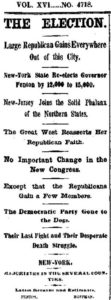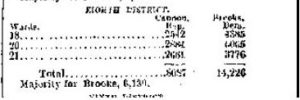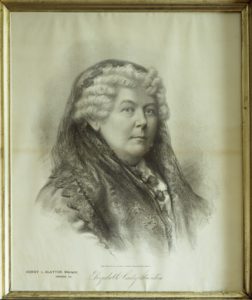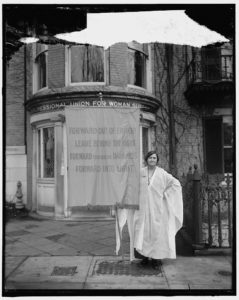In 1866 Elizabeth Cady Stanton ran for Congress for New York’s Eighth District as an independent – unaffiliated with either the Democratic or Republican parties. She didn’t win.
From a Seneca County, New York newspaper in 1866:
AWFUL. – Our whilom towns-lady, Mrs. Elizabeth Cady Stanton, announced herself a few days before election as a candidate for Member of Congress in the 8th District of New York city, but only received eight votes. This shows what a graceless set those New York “copperheads” are, and that it will take a good deal of civilizing yet to bring them up to the mark of “impartial suffrage.”
A New York City newspaper lauded the eight (male) voters. From The New-York Times, November 8, 1866:
AN EPOCH. – It appears that out of twenty-two, odd, thousand votes cast in the Eighth District for Congressional candidates, Mrs. ELIZABETH CADY STANTON received eight. If the stringent rules of the ballot did not forbid, it would be satisfactory to record and embalm the names of this independent and gallant minority. As marking an epoch in the progress of the race, their names, however, may be held of less significance by posterity than their symbolical number. Thus it has been in times past. Of the Septuagint – the seventy (or seventy-two) learned Jews to whom we all owe so much of our sacred history – not an individual name of popular significance is extant. No one of the Jewish Sanhedrim of two thousand years ago, or of the French Sanhedrim of sixty years ago, presents to-day a name to conjure by. The Venetian Council of Ten [represent an epoch?] in government, and nothing more. Few care to recall the names of OCTAVIUS, ANTHONY and LEPIDUS, in connection with the Roman Triumvirate. And yet, if there were no social and political etiquette in the way, how satisfactory it would be to call the valiant Eight who have led the way in this movement toward universal enfranchisement by their proper names! Their history will, some day, be written by some learned pundit, who may properly call it: “The Reformed Congress; or, The Modern Octatenque.”





